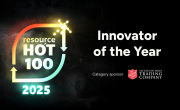WEEE’re improving
There have been a few hitches, shall we say, in the implementation of the WEEE Directive in the UK. But things are starting to evolve and improve, according to Dr Philip Morton, CEO of REPIC
Since the operational implementation of the WEEE Directive in the UK in July 2007, there have been a number of significant amendments and improvements to refine the system for recycling electronic waste.
As with any new system, the UK WEEE system was naturally going to take time to perfect and it isn’t there yet! Imminent future developments include the recast of the WEEE Directive, which is likely to be adopted during 2011 and will focus on areas such as scope, increased collection targets for WEEE, clarification of producer responsibility and the possibility of interoperable country registers for producers.
 On the UK front, we have also seen several iterations of Environment Agency guidance, and a revised code of practice was released by the UK Department for Business, Innovation and Skills in August. This provided further clarity on the way that WEEE should be separately collected at designated collection facilities (DCFs) and governs the relationships between collectors of WEEE and producer compliance schemes (PCSs), clearly stating what DCFs and PCSs must do and, just as importantly, what they can’t do.
On the UK front, we have also seen several iterations of Environment Agency guidance, and a revised code of practice was released by the UK Department for Business, Innovation and Skills in August. This provided further clarity on the way that WEEE should be separately collected at designated collection facilities (DCFs) and governs the relationships between collectors of WEEE and producer compliance schemes (PCSs), clearly stating what DCFs and PCSs must do and, just as importantly, what they can’t do.
One of the most significant changes to the system since its implementation has been the requirement for every PCS to submit and adhere to a balanced operational plan. This essentially prevents intentional over- or under-collection, and stops a PCS collecting WEEE on behalf of another scheme without an advance agreement – something that has imbalanced the UK system. This is changing, though, as DCF operators continue to switch to PCSs that need the WEEE rather than those that act as intermediaries.
Due to these changes, it is likely that the market will start to rationalise. Currently, there are around 30 business-to-consumer PCSs in the UK, but these are expected to consolidate, resulting in fewer, but larger, PCSs. A similar trend is happening with treatment companies, and we also expect smaller local authorities (LAs) to group together to collect the WEEE required by their partner PCSs. This will ultimately mean that there will be fewer ‘parcels’ of WEEE, but that these parcels will be bigger.
Improving collection rates
While the traditional route for WEEE recycling has been via an LA collection site, retailers are playing an increasingly prominent role. Collection through retail outlets, often on home delivery of new products, is not only the most ecofriendly and economic option, but also the most convenient for the consumer.
The relatively low collection rate of WEEE across Europe is one of the sector’s biggest concerns, although it is increasingly recognised that we actually have low counting rates, rather than low collection rates, and simply fail to count WEEE going through routes other than the PCSs. The current review of the system is, therefore, expected to introduce both voluntary and mandatory standards for treatment facilities to help increase the rate of recycling and include for counting purposes the WEEE handled by everyone, not just PCSs.
Closing the gap
Part of this process involves making recycling routes more secure, because tightening the system will ensure that less WEEE flows out of it. We know that the risk of ‘leakage’ and the illegal exporting of WEEE can be increased where several parties (intermediaries) are involved in the recycling chain, as the audit trail becomes longer and potentially less clear. This is just maths: the more parties that handle WEEE from collection to treatment to funding, the more complex it becomes.
This risk can be significantly reduced, however, where there is a direct relationship between those collecting WEEE – a local authority, its appointed waste company or other DCF operator – and a PCS that directly finances the WEEE for its members, because the trail is far shorter and clearer, which enhances the security of the recycling process.
The recast is working to directly address these issues by implementing an increased target for WEEE collection, raising recycling and reuse rates and clearly defining what can be classed as WEEE across all member states. Ultimately, the recast is expected to make it far easier to see where WEEE comes from, where it goes to and who pays for it – helping to achieve the level of transparency, environmental performance and the high rate of collection that the industry is striving towards.
Dr Philip Morton is CEO of REPIC www.repic.co.uk





